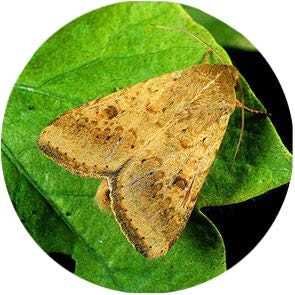


| Latin Name | Helicoverpa armigera |
| Common Name | Cotton bollworm |
| Biology | Adults are nocturnal with strong flight ability, sensitive to black light traps and sex pheromones, and lay eggs on the undersides of leaves. Larvae are highly polyphagous, damaging leaves, flowers, buds, fruits, etc.; infested fruits develop holes, severely affecting yield and quality. This pest occurs 3-7 generations annually, overwinters as pupae in soil, and is a global agricultural pest. |
| Damage | This pest damages multiple crops such as cotton, corn, tomatoes, peppers, and legumes. |
| Distribution Regions | Global cotton-growing regions |
| Monitoring | Pheromone lures mimic natural sex pheromones to attract male insects into specialized traps for population monitoring and suppression. As a core IPM component, monitoring enables early risk detection and targeted control. Mass trapping reduces mating opportunities to curb offspring populations. Protocols: ●Use only with matched traps. ●15-45 traps/hectare,replace/replenish every 4-6 weeks. ●Wear gloves or wash hands with detergent when switching lure types. ●Refer to trap-specific hanging instructions. |
| Recommended Traps | Delta Trap, Wing Trap |

Comparta su información de contacto para recibir soluciones de feromonas de precisión. En caso de que nuestra cartera existente no se adapte de forma óptima, nuestro equipo de química sintética iniciará el desarrollo personalizado, desde el diseño de la estructura molecular hasta la producción a escala.